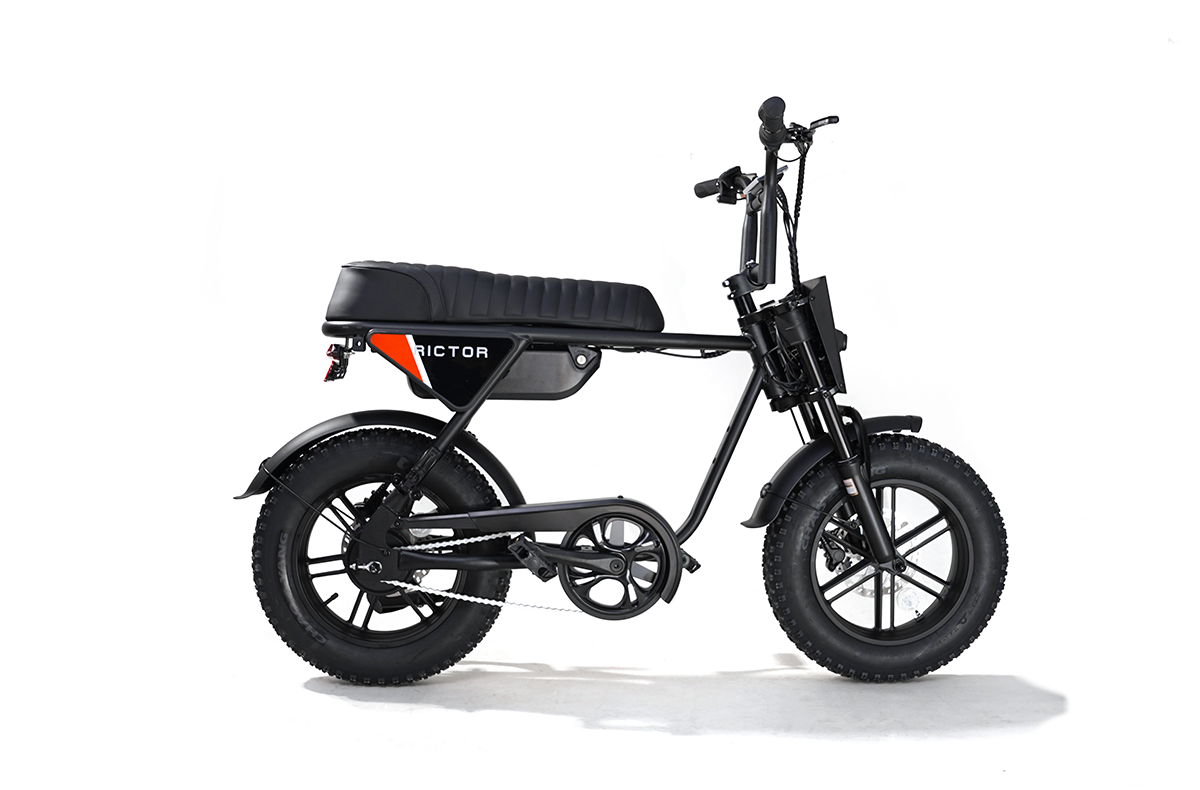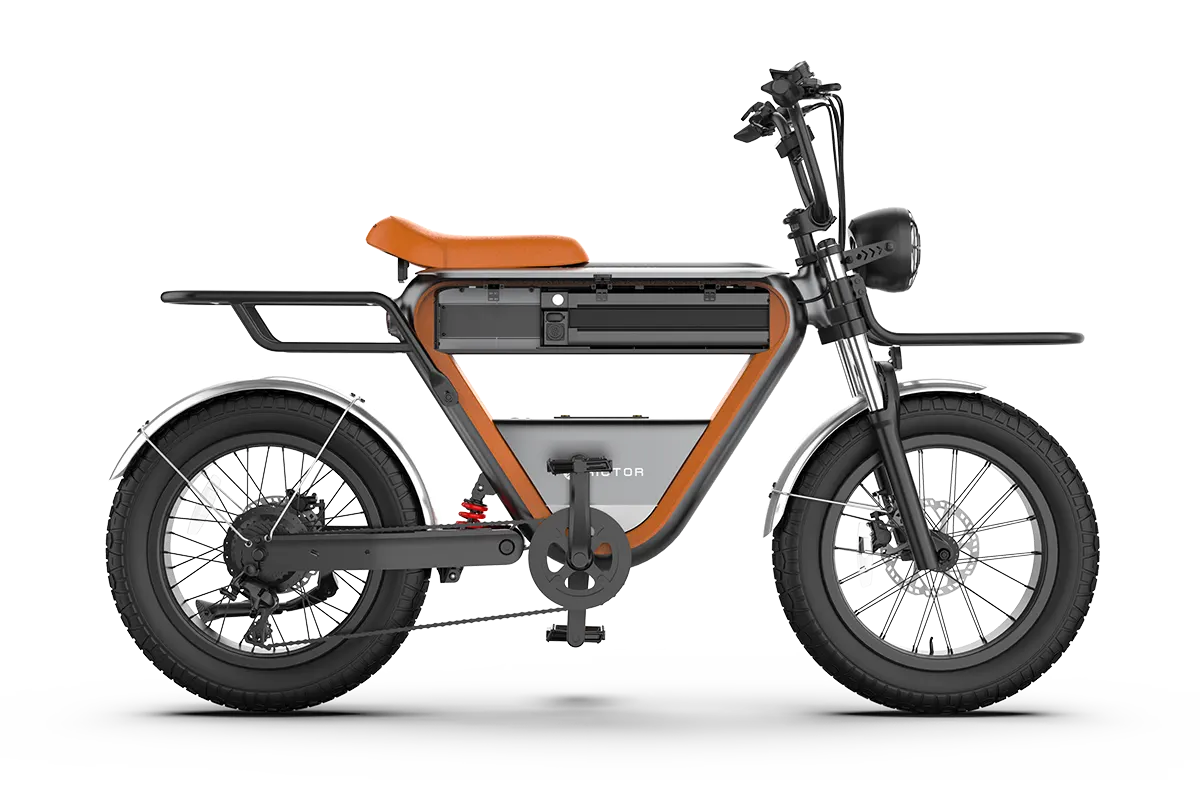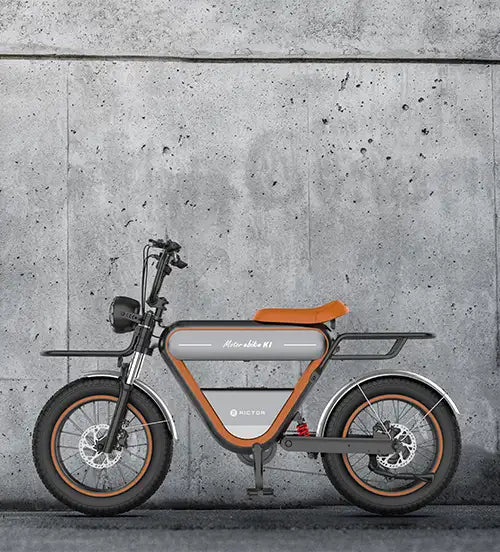![2024 electric bicycle pricing, don’t overpay on your next ride [+ good recommendation]](http://rictor.com/cdn/shop/articles/ebike_pricing.png?v=1724843143&width=536)
2024 Electric Bicycle Pricing, don’t overpay on your next ride [+ Good Recommendation]
What You Can Expect to Spend
If you’re shopping for an electric bike, you’ll find that prices can range from as low as $500 to as high as $8,000 or even more.
Yeah, that’s a pretty big range! Entry-level models, which are great for casual riders or those new to e-bikes, usually start around $500 to $1,000.
These bikes are basic but still offer the electric boost you’re looking for.
On the other end of the spectrum, high-end e-bikes, which can cost upwards of $8,000, come with all the bells and whistles.
These are the bikes for serious cyclists who want top-notch performance and advanced features.
So why such a big difference in price?
Well, mid-range e-bikes, priced between $1,000 and $3,000, often offer a nice balance between performance and price.
These bikes typically have better components, longer battery life, and a more comfortable ride.
If you’re looking at the high-end models, be prepared to pay for top-tier features like high-performance motors, advanced suspension systems, and integrated tech like GPS and smartphone connectivity.

What Affects the Price of an Electric Bike
Motor Type
One of the biggest factors affecting the price of an e-bike is the type of motor it uses.
Mid-drive motors are usually more expensive because they provide better balance and efficiency, especially when climbing hills.
They’re often found in higher-end models and are a favorite among serious riders. Rear hub motors, on the other hand, are more common in budget and mid-range bikes.
They’re cheaper but still get the job done for most everyday riders.
Battery Capacity and Brand
Another key factor is the battery.
Not only does the size of the battery matter—larger batteries mean longer rides—but the brand plays a role too.
Batteries from big names like Samsung and LG are known for their reliability and longevity, but they can also add to the price.
If you’re planning on using your e-bike for long commutes or adventures, it might be worth investing in a bike with a higher-capacity battery, even if it costs a bit more.
The Rictor K1 uses LG 21700 cells, offering a balance between performance and convenience.
Frame Materials
The material used for the bike’s frame also affects the price. Aluminum frames are common and keep costs down while being lightweight and durable.
However, if you’re willing to splurge, you can find e-bikes made from carbon fiber or titanium.
These materials are lighter and stronger but come with a higher price tag. They’re ideal if you’re looking for a high-performance bike or just want something that feels premium.
Brand Influence
Let’s not forget about the brand. Just like with cars, certain e-bike brands are known for their quality, innovation, and customer service, which means they can charge more.
Brands like Trek, Specialized, Rictor, and Cannondale are examples of companies that offer high-end bikes with top-notch features.
You’re not just paying for the bike; you’re also paying for the brand’s reputation and the peace of mind that comes with a reliable product.
Types of Electric Bicycles and What They Cost

City/Commuter Electric Bicycles
City or commuter e-bikes are designed for urban environments. They’re practical, easy to ride, and range from $499 to $3,000.
These bikes are perfect for getting around town without breaking a sweat, and they often come with features like built-in lights and cargo racks for carrying your stuff.
Electric Mountain Bicycles
If you’re into off-road adventures, electric mountain bikes (e-MTBs) are where it’s at.
These bikes are built to handle rough terrain and steep hills, with prices ranging from $999 to $15,000.
The higher-end models have full suspension systems and high-capacity batteries, so you can ride farther and tackle tougher trails.
Electric Road Bicycles
Electric road bikes are all about speed and efficiency on paved roads.
They’re lightweight and designed for long-distance riding.
Prices for these bikes range from $999 to $6,000. If you’re a road cycling enthusiast who wants a little extra help on those long rides, this is the type of e-bike for you.
Folding Electric Bicycles
Folding e-bikes are super convenient if you’re tight on space or need something portable.
They’re perfect for city dwellers or commuters who take public transportation.
Prices range from $699 to $3,000. While they might not have the same performance as full-sized bikes, their convenience is hard to beat.
Cruiser Electric Bicycles
Cruiser e-bikes are all about comfort and style.
With wide tires, cushy seats, and an upright riding position, these bikes are great for leisurely rides.
Prices range from $700 to $3,000.
They’re perfect for cruising along the beach or through your neighborhood in comfort and style.
Cargo Electric Bicycles
Need to haul groceries, kids, or other heavy loads?
Cargo e-bikes are your best bet.
These sturdy bikes range from $1,799 to $3,000 and are designed to carry a lot of weight without compromising on performance.
They’re a practical option for families or anyone who needs a little extra hauling power.
Kids' Electric Bicycles
Yes, there are e-bikes for kids too!
These bikes are smaller and less powerful than adult models but still offer the fun and excitement of an electric ride.
Prices range from $499 to $2,000. They’re a great way to get your kids into biking while giving them a little boost.
Electric Tricycles
For those who need extra stability, electric tricycles are a great option.
Prices range from $1,000 to $5,000.
These trikes are popular among older adults or those with balance issues.
They offer a comfortable and secure ride, making them a great alternative to traditional bikes.
Why Prices Vary Across Different Markets
Where you live can have a big impact on the price of an e-bike. In the U.S., factors like state taxes, import tariffs, and shipping costs can make a difference.
Prices might be higher in states with higher sales taxes. Also, availability of certain models might vary depending on your region, which can affect supply and demand.
Prices can also differ between urban and rural areas. In cities, where demand for e-bikes is higher, you might find prices are slightly elevated.
There’s also more competition among dealers, which can affect pricing.
Rural areas might have fewer options, but sometimes you can find better deals due to lower demand.
Just keep in mind that shipping costs might come into play if you’re buying from a distant retailer.
Buying Second-Hand: A Cheaper Option?
If you’re on a budget, the second-hand market can be a goldmine for e-bike deals. Prices for used e-bikes typically range from $300 to $4,000, depending on the bike’s age, condition, and brand.
While buying used can save you a lot of money, make sure to check the condition of the battery and motor, as these are the most expensive parts to replace.
Deciding between a new and second-hand e-bike depends on what you’re looking for.
New bikes come with warranties and the latest tech, which is great if you want peace of mind.
But if you’re willing to take a bit of a gamble, second-hand bikes offer a more affordable option.
Just be ready to possibly invest in some repairs or upgrades down the line.
Don’t Forget About Government Subsidies and Tax
When you're calculating the cost of an electric bike, don't overlook the possibility of government subsidies and tax incentives.
These programs can significantly reduce the amount you end up paying out of pocket.
Across the United States, various states and municipalities offer financial incentives to encourage people to adopt more eco-friendly transportation options, including e-bikes.
Depending on where you live, you might qualify for a rebate when you purchase an electric bike.
These rebates can range from $200 to $1,500, and some states also offer tax credits that can be applied when you file your state income tax return.
You can stack these benefits, combining state and local rebates with federal incentives to make your new e-bike even more affordable.

How Do Different Brands Impact E-Bike Prices
Just like with cars or smartphones, the brand of an e-bike can have a big impact on the price.
Some brands are known for their high quality, innovative designs, and excellent customer service, and they charge a premium for those features.
For instance, e-bikes from brands like Trek, Specialized, and Riese & Müller often come with a higher price tag, but they also offer top-tier performance, durability, and features that cheaper bikes might not have.
But don’t think that you always have to go for the most expensive option.
There are plenty of mid-range brands that offer great value for money, like Rictor and Aventon.
These brands might not have the same cachet as the top-tier names, but they produce reliable, well-reviewed bikes that deliver excellent performance without breaking the bank.
Another thing to consider is the resale value. Some brands retain their value better than others, which is something to keep in mind if you think you might want to sell your bike down the line.
Brands known for their durability and reliability, like Rictor K1 and Riese & Müller, tend to hold up well in the second-hand market.
While the initial purchase price might be higher, you could recoup more of your investment if you decide to upgrade or sell your bike in a few years.
What About Maintenance and Charging Costs
Owning an electric bike isn’t just about the purchase price; you’ll also need to factor in ongoing maintenance costs.
Just like a car, an e-bike requires regular upkeep to keep it running smoothly. Things like tune-ups, tire replacements, and occasional motor repairs are part of the deal.
On average, you might spend around $100 to $300 per year on maintenance, depending on how often you ride and the type of bike you have.
High-end bikes, with their more sophisticated components, might cost a bit more to maintain, but they’re also likely to last longer with proper care.
One of the most significant long-term costs associated with owning an e-bike is battery replacement.
Most e-bike batteries last between 2 to 5 years, depending on usage and care. When the time comes to replace your battery, you’re looking at spending anywhere from $300 to $800.
In addition to replacement costs, you’ll also need to consider the cost of charging your bike.
Fortunately, this is relatively inexpensive. The cost of electricity to fully charge an e-bike battery typically falls between $0.05 to $0.10 per charge.
Even if you’re riding every day, this adds up to just a few dollars a month, making e-bikes much more economical to operate than gas-powered vehicles.
Is an E-Bike a Good Investment?
When you’re thinking about how much an e-bike costs, it’s important to consider the long-term benefits.
Compared to other forms of transportation, e-bikes can save you a lot of money over time.
For one, they’re much cheaper to operate than cars—no need to pay for gas, parking, or public transit passes.
Plus, the maintenance costs are lower, and if you take advantage of government incentives, your initial outlay can be reduced significantly.
E-bikes also offer other kinds of value that aren’t strictly financial.
They’re environmentally friendly, help you stay active, and can save you time by allowing you to zip through traffic or avoid public transit delays.
Over the long haul, the benefits of owning an e-bike can far outweigh the initial purchase price, making them a smart investment for many people.
When you factor in everything—purchase price, maintenance, charging, and battery replacement—the Total Cost of Ownership (TCO) for an e-bike over five years typically ranges from $1,500 to $5,000.
Compare this to the cost of owning and operating a car, which can easily exceed $20,000 over the same period, and it’s clear that e-bikes are a much more economical choice, especially for urban dwellers or those who use their bikes regularly.
What Do E-Bike Owners Say
When I first got on the Rictor K1, I was immediately struck by its retro design, blending elements of both bicycles and motorcycles. It’s not just about looks, though—the bike's performance is equally impressive. One of the standout features for me is the 750W motor that provides more than enough power, whether I’m riding in electric mode or using pedal assist.
Speaking of pedal assist, it really transforms the riding experience. In pedal assist mode, the bike reaches speeds of up to 28 mph, making it perfect for those times when I want a faster commute or a more exhilarating ride. Even when I’m just cruising in electric mode, it comfortably hits 20 mph, which is great for when I want to take it easy.
Another aspect I love about the K1 is its range. On a full charge, I can get around 35 miles in electric mode, which is more than enough for my daily rides. When I switch to pedal assist, the range extends to over 70 miles, which means I can go on longer trips without worrying about running out of juice.
The comfort level is top-notch, thanks to features like the hydraulic front suspension and rear shock absorbers. Whether I’m riding on smooth city streets or bumpier paths, the bike adapts well to the terrain, ensuring a smooth ride every time. The 20-inch wide tires further add to the comfort, providing stability and grip on various surfaces.
Experienced riders often have some solid advice based on different budgets:
-
Under $1,000: If you’re looking for something budget-friendly, brands like Ancheer and Swagtron are great options. They’re reliable for casual rides and short commutes, offering good value for the price.
-
$1,000 to $3,000: This price range strikes a good balance between performance and cost. Bikes in this bracket often come with mid-drive motors and solid battery life. Rictor and Aventon are highly recommended for offering excellent reliability and features without breaking the bank.
-
Above $3,000: If you’re ready to invest in a top-tier e-bike, look towards premium brands like Trek or Specialized. These bikes are designed with advanced features, superior build quality, and durability in mind, making them ideal for serious cyclists who want nothing but the best.
Wrapping It All Up
The cost of an electric bike depends on many factors, including the type of bike, its features, the brand, and how you plan to use it.
Whether you’re looking for a budget-friendly option for casual rides or a high-end model for serious cycling, there’s an e-bike out there that fits your needs and your budget.
By understanding the key factors that affect e-bike pricing, you’ll be better equipped to make a smart purchase.
While the initial cost might seem high, the long-term savings and benefits of owning an e-bike make it a worthwhile investment.
FAQs
What are the benefits of choosing an electric bike with a removable battery?
A removable battery offers several advantages: it allows for easy charging away from the bike, provides the option to carry a spare battery for extended range, and simplifies the process of replacing the battery when it reaches the end of its lifespan.
Additionally, removing the battery reduces the bike's weight, making it easier to transport.
Can I upgrade the battery on my electric bike for longer range?
In many cases, it is possible to upgrade the battery of an electric bike to achieve a longer range.
However, it's important to ensure that the new battery is compatible with your bike's motor and controller.
Upgrading the battery may also require adjustments to the bike's software or settings, which should be done by a professional.
How does the resale value of electric bikes compare to traditional bicycles?
Electric bikes generally retain their value better than traditional bicycles, especially if they are from well-known brands and have been well-maintained.
Factors such as battery life, motor condition, and the availability of updated models from the same brand can influence resale value. Electric bikes with high-end components tend to have a higher resale valu
💡 Explore More Here!
- The RICTOR K1 is the BEST ALL AROUND EBike Under $2,500!
- Are e-bikes waterproof? the truth might surprise you!we still have owesome recommendation
- Your handy checklist for buying a new e-bike, don't miss your best bike
- How Fast Can E-Bikes with Different Voltages Go?
- Are Electric Bikes Allowed in National Forests? (In Some, Yes)




